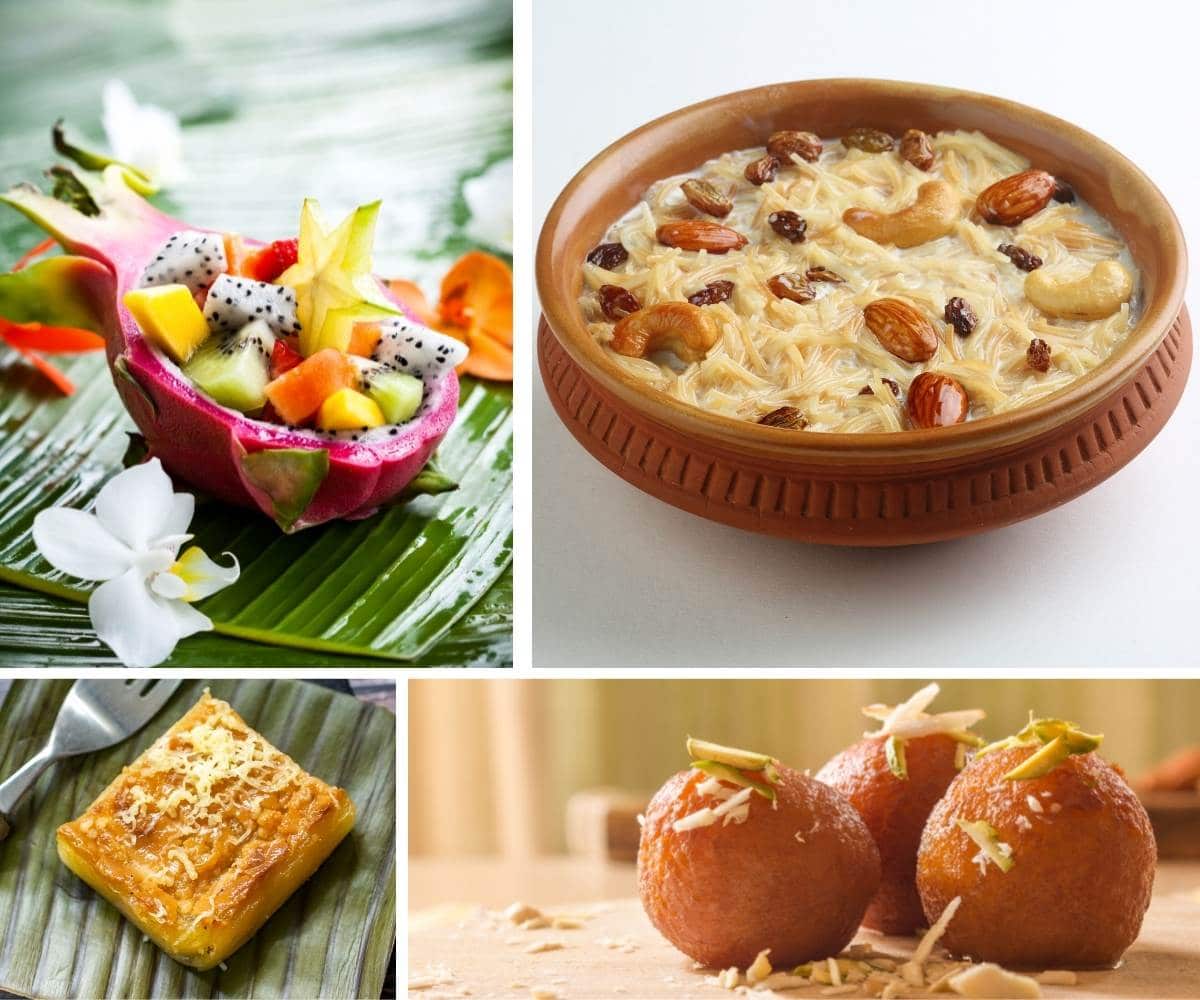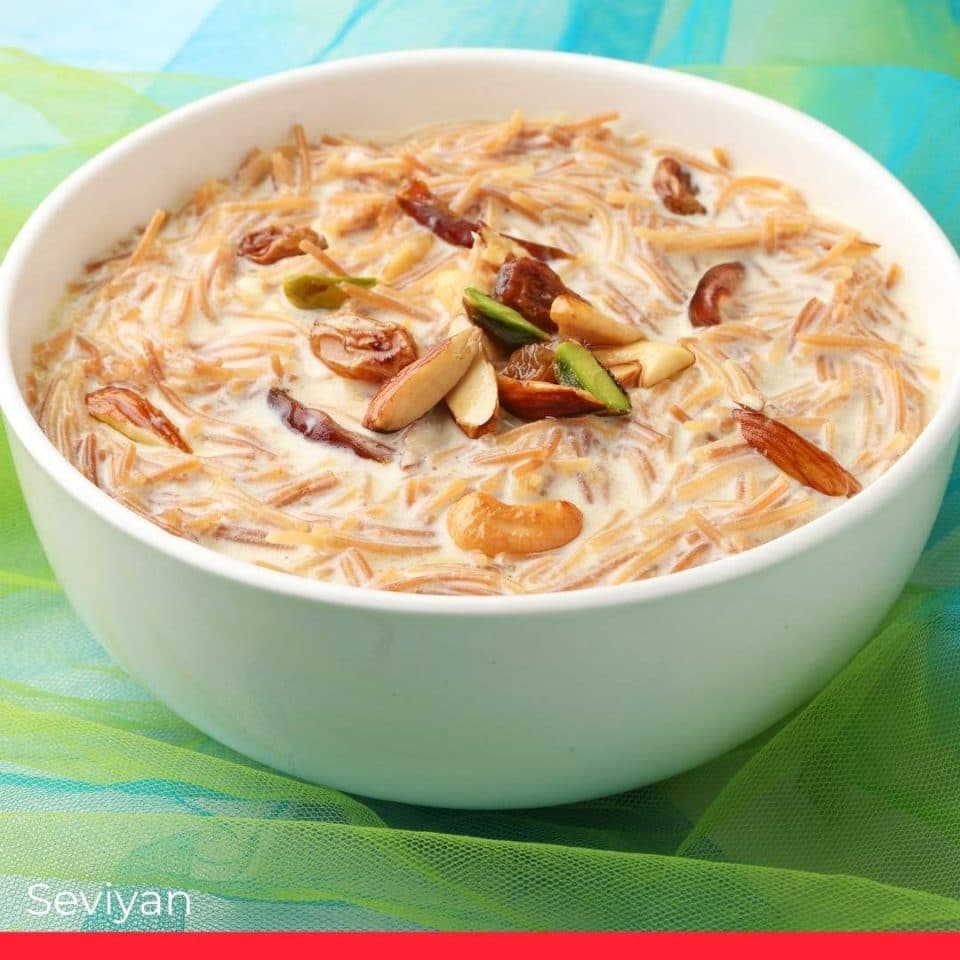Top 17 Most Popular Desserts in Fiji

These popular Fijian desserts are a mix of both traditional and modern influences and reflect the multiracial and multicultural mix of the Fijian population. Popular desserts in Fiji range from the simple, like seasonal fruits, to Indian sweets and more sophisticated cakes and pies and the Rotuman fekei.
17. Gulgula

Gulgula, similar to donuts or pancakes, is a favorite as a snack or dessert. Mix flour, baking powder, cardamom, nutmeg, and sugar with water to form a pancake–type batter.
Deep fry the batter in balls until golden brown and then drain on paper towels. Can be served plain, but is delicious with condensed milk. Add mashed ripe bananas and/or raisins for variety.
16. Mooncakes

A traditional Chinese dessert for the mid-Autumn festival, mooncakes are usually available from most Chinese shops. The first Chinese arrived in Fiji back in the 1800s, so there is a fairly large well-established community that is third and fourth generation Fijian-born.
Whilst delicious, mooncakes are an acquired taste and not as sweet as most of the desserts on this list. Served with a nice hot cup of tea.
15. Ice Cream and canned fruits

One of the most popular and convenient desserts is ice cream with fruits. Not fresh fruits but canned peaches, pears, or even mixed fruits. Usually served in bowls, but sometimes in cones, especially for children’s events.
There’s a wide range of flavors available but plain vanilla, chocolate, and passionfruit are still the favorites.
14. Lakri (Lakdi)

Eaten as a snack, this simple Indian sweet is made from a flour-and-water mixture that is cut into chips, deep-fried until golden brown, cooled, and then dipped into sugar syrup made of melted sugar and water. Lakri is eaten at any time as a snack or dessert accompaniment.
13. Banana cake

As bananas are plentiful in Fiji, they are used in a variety of ways for dessert, and banana cake is not only delicious but easy to bake with readily available ingredients, especially ripe bananas. Usually served plain (without icing) with a hot cup of tea.
12. Jalebi

Jalebi is a very sugary Indian sweet that is served as dessert and is very popular with children. Mix flour, corn flour, and baking soda with ghee and food coloring (red is popular in Fiji) to a smooth consistency and leave overnight.
Deep fry in whorl circular patterns and allow to dry. The sweets are then soaked in sugar syrup made of melted sugar, cardamom, and nutmeg and allowed to dry. Delicious, but be mindful of the high sugar content.
11. Gulab jamun

Gulab jamun is a popular Indian sweet, which can be served as a dessert or snack. Typically, powered milk is mixed with flour, spices, ghee, and vanilla essence. Add condensed milk and mix to dough consistency. Roll out and then make two-inches-long tube dumplings. Deep fry in ghee and allow to cool.
The dumplings are then soaked for a few minutes in a sugar syrup consisting of just melted sugar and water. Remove and allow to dry, and the dumplings are ready for serving.
Note: The traditional Indian version is round balls served in syrup, but in Fiji the shape is more like a tapered cylinder and the dumplings are allowed to dry.
10. Pineapple custard pies

Possibly as a tradition from the colonial era, custard pies are not only very popular as a dessert in Fiji but are also served with morning or afternoon tea. Standard pastry is lined in large baking trays and baked.
When cooled, it is filled with cooked custard and pineapple (fresh or canned). Optionally, a meringue topping of beaten egg whites with cream of tartar and sugar can be added and browned in the oven.
The pie is then cut into large squares and served with a cup of tea or coffee.
9. Fruit platter

As the name suggests, this dessert is a platter of peeled fresh local fruits that are either sliced into standard slices and arranged on a platter or artistically presented as a centerpiece for a dessert table in a restaurant or hotel buffet.
Typically, imported fruits are also included, like oranges, grapes, kiwi fruit, or whatever is available to the chef.
8. Milk barfi

There are many variations of this Indian sweet dessert, but the one most commonly used in Fiji uses powdered milk and ghee. Mix these together with cardamom and nutmeg. A sugar syrup of melted sugar, water, and vanilla essence is added until a soft dough consistency is achieved.
The mixture is then rolled out onto a baking tray. Cut into squares and allow to set. Optionally sprinkle Hundreds & Thousands on top when still soft and gently press in. Serve as dessert or a snack.
7. Sweet vermicelli noodles (Seviyan)

This popular dessert is usually served by Muslims in Fiji during Eid. The vermicelli noodles are fried in ghee and then cooled. Milk is heated in a pot, sugar is added, and then condensed milk with crushed cardamom, and then the vermicelli noodles are added back in.
When the vermicelli noodles are soft, the mixture is cooled and then placed in a fridge or cooler. It is served cold with a hot cup of tea and other dessert sweets.
6. Fruit salad

A healthy colorful dessert made up of various fresh local fruits, and most commonly would have: pawpaw (papaya), bananas, pineapples, watermelon, and mango (when in season). All fruits are peeled and cut into cube sizes and mixed together in a large fruit bowl and placed in a fridge or cooler.
Delicious served on its own or with cream or ice cream.
5. Chocolate cake

Whilst chocolate is a favorite in Fiji at any time, chocolate cake is extremely popular as a dessert, especially for birthdays. The recipes vary and the traditional chocolate gateau, black forest cake, and ‘death by chocolate’ are available at most cake shops and cafes. Usually served with tea or coffee or even with ice cream.
4. Fekei

Fekei is a popular dessert from Rotuman, Fiji’s Polynesian island that is closer to Samoa than Fiji. It is made from taro, starch, sugar, and coconut milk, similar to the Fijian vakalolo.
The taro is peeled and then beaten with a thick wooden stick similar to a rolling pin. When it has a sticky doughy consistency, starch and sugar are added. Finally, coconut milk is added until the consistency is similar to a pudding.
It is cut into serving sizes and wrapped in banana leaves and baked in a lovo (earth oven/hungi). It is served on its own, and it is a delicacy.
3. Trifle

As in most countries, Fiji has a variety of trifle recipes with a base of sponge or butter cake. A typical trifle in Fiji would have alternating layers of sponge cake, jelly, custard, canned fruits (optional), and nuts (optional). Served cold on hot days or nights, it’s a dessert well received whatever the occasion.
2. Halwa

A popular dessert, halwa is made from semolina. Melt ghee in a saucepan and add semolina. When golden brown, add sugar, cardamom, nutmeg, chopped almonds (optional), and sultanas (optional). Stir in milk on a low heat until the mixture has a porridge-like consistency and is cooked.
It is delicious served on its own and is usually prepared as a special-occasion dessert.
1. Cassava (tapioca) bread/cake

Cassava (tapioca) is peeled, washed, and allowed to dry. It is then finely grated to create a coarse flour. Mature coconuts are scraped and squeezed to produce coconut cream (canned coconut cream can be used as a substitute). Desiccated coconut is added to the flour with sugar. Mix the dry ingredients and then add coconut cream to make a smooth batter.
Bake in the oven using a large shallow baking tin until cooked through. In the villages, this is usually done over charcoal, which gives the cake a smoky flavor. Delicious served plain with a hot cup of tea.
Related: Most Popular Foods in Fiji


